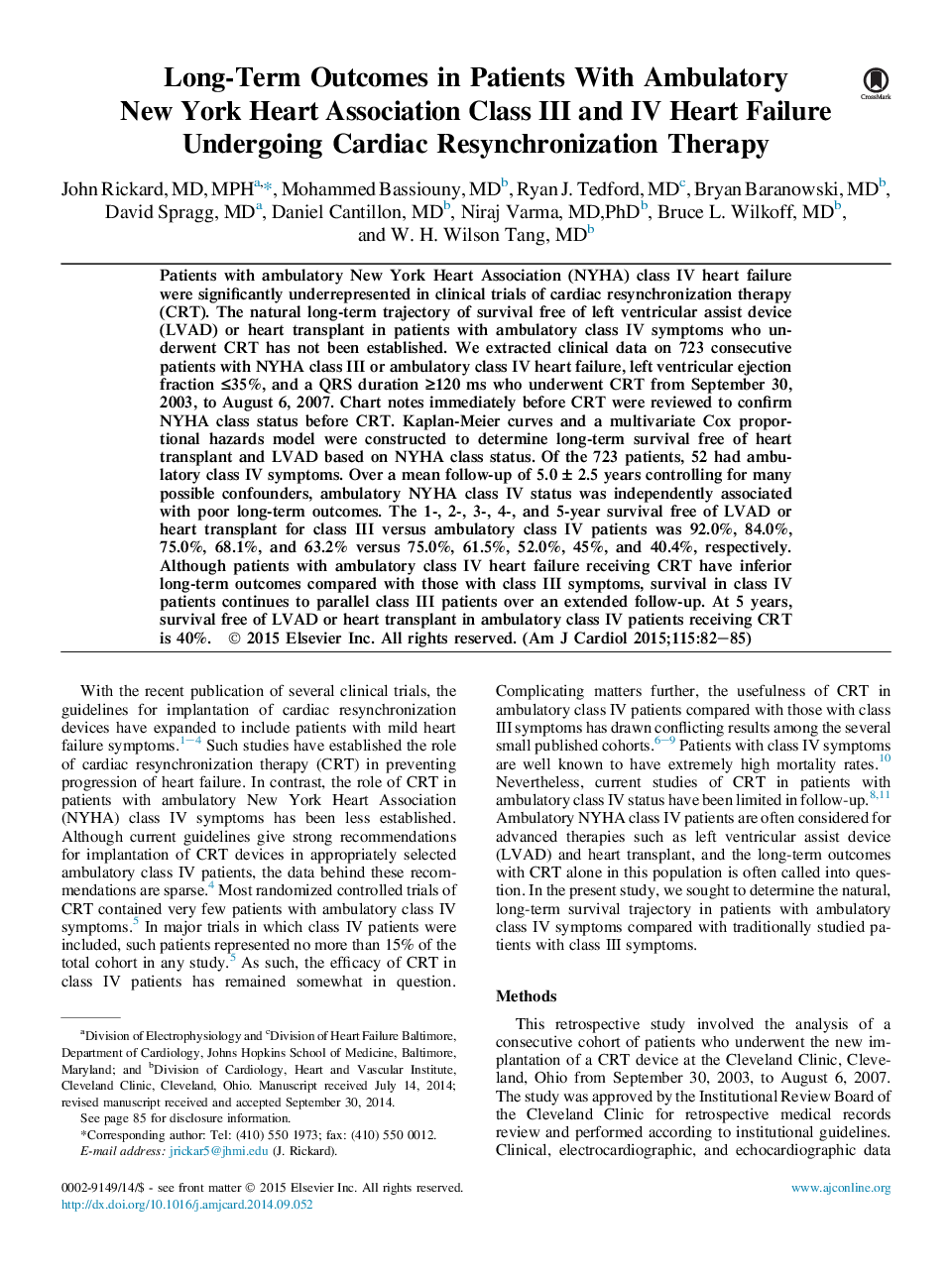| کد مقاله | کد نشریه | سال انتشار | مقاله انگلیسی | نسخه تمام متن |
|---|---|---|---|---|
| 2853722 | 1572150 | 2015 | 4 صفحه PDF | دانلود رایگان |

• Patients with ambulatory New York Heart Association class IV heart failure were severely underrepresented in clinical trials of cardiac resynchronization therapy (CRT) despite strong recommendations in the current guidelines.
• We examine long-term outcomes (survival free of left ventricular assist device or heart transplant) in patients with ambulatory class IV heart failure receiving CRT, presenting the longest known follow-up of these patients by a large margin.
• The salient findings of this study are that although patients with ambulatory class IV heart failure who underwent CRT derive inferior long-term outcomes compared with class III patients after controlling for many variables, survival in such patients parallels that of class III patients rather than decreasing rapidly as could be expected.
• Survival in ambulatory class IV patients receiving CRT at 5 years is a respectable 40%.
Patients with ambulatory New York Heart Association (NYHA) class IV heart failure were significantly underrepresented in clinical trials of cardiac resynchronization therapy (CRT). The natural long-term trajectory of survival free of left ventricular assist device (LVAD) or heart transplant in patients with ambulatory class IV symptoms who underwent CRT has not been established. We extracted clinical data on 723 consecutive patients with NYHA class III or ambulatory class IV heart failure, left ventricular ejection fraction ≤35%, and a QRS duration ≥120 ms who underwent CRT from September 30, 2003, to August 6, 2007. Chart notes immediately before CRT were reviewed to confirm NYHA class status before CRT. Kaplan-Meier curves and a multivariate Cox proportional hazards model were constructed to determine long-term survival free of heart transplant and LVAD based on NYHA class status. Of the 723 patients, 52 had ambulatory class IV symptoms. Over a mean follow-up of 5.0 ± 2.5 years controlling for many possible confounders, ambulatory NYHA class IV status was independently associated with poor long-term outcomes. The 1-, 2-, 3-, 4-, and 5-year survival free of LVAD or heart transplant for class III versus ambulatory class IV patients was 92.0%, 84.0%, 75.0%, 68.1%, and 63.2% versus 75.0%, 61.5%, 52.0%, 45%, and 40.4%, respectively. Although patients with ambulatory class IV heart failure receiving CRT have inferior long-term outcomes compared with those with class III symptoms, survival in class IV patients continues to parallel class III patients over an extended follow-up. At 5 years, survival free of LVAD or heart transplant in ambulatory class IV patients receiving CRT is 40%.
Journal: The American Journal of Cardiology - Volume 115, Issue 1, 1 January 2015, Pages 82–85